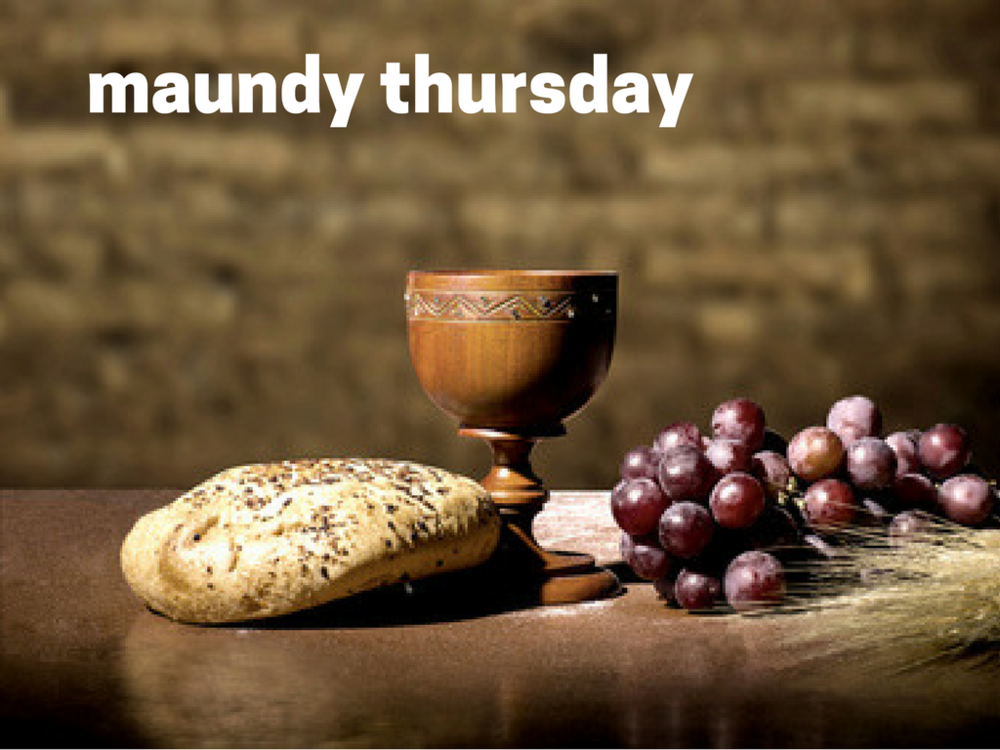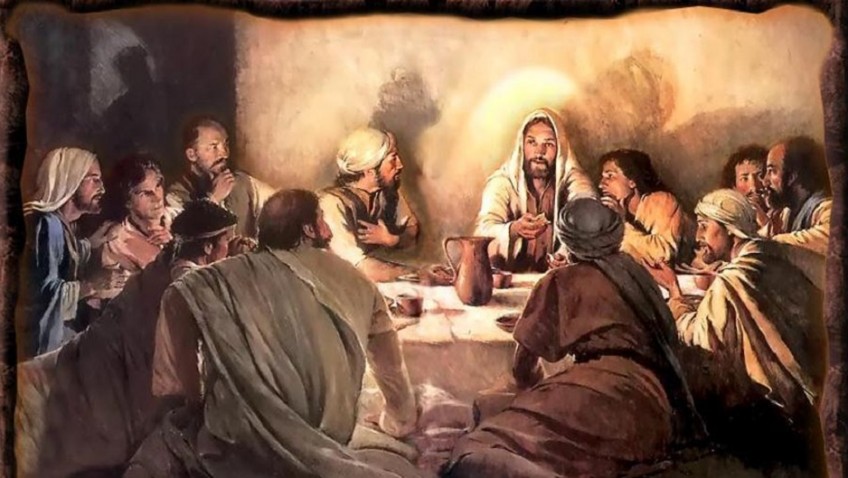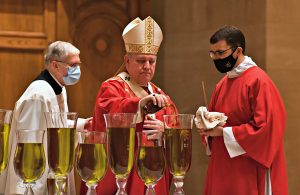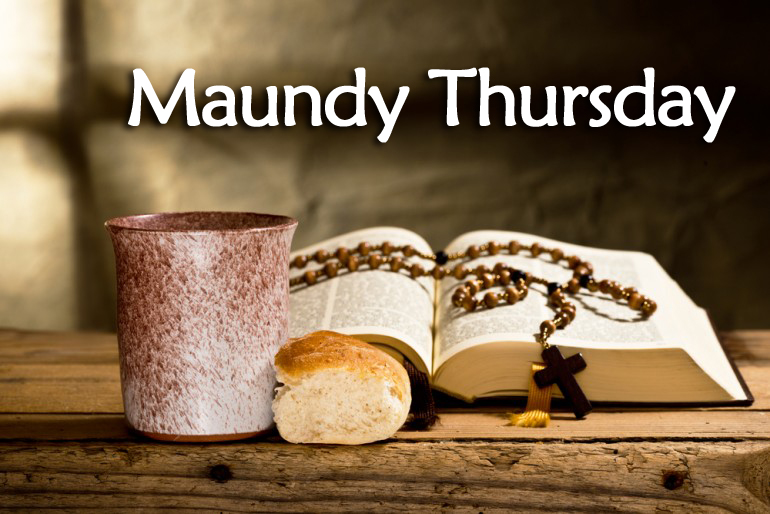The Last Supper or the Lord’s Supper is also called Maundy Thursday. Although it is a widely used term, its meaning is not so well known. The term Maundy derives from the Latin word mandatum for commandment. The commandment here being the defining words that Jesus spoke that evening. The words appear in these verses from John 13 34-35: A new commandment I give to you, that you love one another: just as I have loved you, you also are to love one another. By this, all people will know that you are my disciples if you have love for one another.

The Mass of the Lord’s Supper is normally celebrated in the evening when Friday begins according to Jewish tradition. The Last Supper was held on the Jewish feast of the Passover. The Book of Exodus describes God’s deliverance of the Israelites from slavery in ancient Egypt by inflicting ten plagues upon them. The last of the plagues was to be the death of the Egyptian firstborn so that the Pharaoh would be compelled to release them after such a terrible punishment being visited upon his kingdom.
God, therefore, instructed the Israelites to mark the doors of their houses with the blood of a slaughtered lamb. And so upon seeing this, the spirit of the Lord would pass over the firstborn in these homes, hence the English name of this major Jewish event.

Maundy or Holy Thursday is one of the most profound and important events in the liturgical calendar of the Catholic Church. For it is on this day that the sacrament of the Eucharist was instituted, signifying it to be the true body and blood of Jesus Christ. Besides the Eucharist, the sacrament of the priesthood or Ordination was also instituted through the original enactment of the Last Supper.

By the act of washing the feet of His apostles, Jesus made humility the defining principle of Christianity. He offered Himself as the Passover sacrifice, the sacrificial lamb, by which he reminds every priest who is ordained to follow in His footsteps of the sacrifice expected of them. At the Last Supper Jesus bid farewell to the Apostles and also foretold that one of them would betray him.

The Chrism Mass is one of the most solemn and important liturgies of the liturgical year. As opposed to the Maundy Thursday service which is celebrated in the evenings, the Chrism Mass is celebrated in the mornings, usually in the diocesan cathedral. Traditionally it is a celebration of the institution of the priesthood, hence it is the largest annual gathering of clergy and faithful during which the ordained priests and deacons renew the vows made at their ordination.

This Mass is the occasion when the Holy Chrism Oils used in the sacraments of Baptism, Confirmation, Holy Orders and Anointing of the Sick are blessed. Used in administering sacraments throughout the year, the oils are then given to priests to be taken back to their parishes. The Chrism Mass takes its name from this ceremony.
The Maundy Thursday liturgy which takes place at sundown marks the end of Lent and the beginning of Triduum or three of the Holiest Days in the Catholic Church. After the ceremony, the altars are stripped bare of all ornaments, linens and paraments. It is symbolic of the humiliation of Jesus which followed in the less than twenty-four hours that remained in His life. Events moved rapidly after the Last Supper: the prayer in the garden of Gethsemane, the sell-out by Judas for thirty pieces of silver, the arrest, the mockery of a trial, the beating and crowning with thorns and then finally the agonising trudge to Golgotha for His crucifixion.
After Maundy Thursday, no Mass is celebrated in the Church until the Easter Vigil to proclaim the Resurrection of the Lord Jesus Christ.
1 Comment
Leave a Comment
You must be logged in to post a comment.



[…] Argentine-born pope’s powerful gestures such as washing the feet of young prison inmates on Maundy Thursday, mingling with the crowds and asking that gay people not be judged, have marked him out as an […]